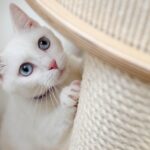Cats are known for their independent nature and often idiosyncratic behaviors. One common challenge that many cat owners face is getting their feline friends to drink enough water. While cats can be adept at self-regulating their food and water intake, many struggle with hydration, especially if they dislike drinking water. In this comprehensive guide, we will delve into effective methods for hydrating a cat that doesn’t enjoy water, tips for maintaining their hydration, and an understanding of the importance of water intake for feline health.
Why Hydration is Crucial for Cats
Before diving into methods for hydrating a reluctant cat, it’s essential to understand why hydration is important:
Kidney Function: Cats are prone to urinary tract issues, and hydration is crucial for kidney health. Dehydration can lead to concentrated urine, which may cause or exacerbate urinary problems.
Digestive Health: Water aids in digestion and helps prevent constipation. A hydrated cat is more likely to have a healthy digestive system.
Temperature Regulation: Cats need adequate hydration to maintain their body temperature effectively.
Joint Health: Hydration aids in lubricating joints, which is especially important for older or arthritic cats.
Overall Well-being: Proper hydration supports the overall health of a cat, affecting energy levels, coat condition, and overall happiness.
Understanding Your Cat’s Water Preferences
Cats have natural instincts regarding water. Understanding these can help you tailor your approach:
Instinctual Behavior: In the wild, cats often obtain moisture from their prey. They may not instinctively seek out water bowls.
Sensitivity to Odor and Taste: Cats can be sensitive to the smell and taste of water. If the water is stale or has a strong odor (e.g., from plastic bowls), they may refuse to drink.
Environmental Factors: Cats may avoid drinking water if they feel threatened or if their environment is noisy or busy.
Tips to Encourage Hydration in Reluctant Cats
1. Invest in a Water Fountain
Cats are often more inclined to drink running water, as it appears fresher and is less likely to harbor bacteria. A cat water fountain can be an excellent investment:
- Continuous Flow: The continuous flow keeps water oxygen-rich and fresh.
- Variety in Flow: Many fountains have different flow settings, catering to your cat’s preferences.
2. Change Water Daily
Your cat might refuse to drink if the water becomes stagnant. Ensure you change the water in their bowl at least once a day to keep it fresh:
- Clean the Bowl Regularly: Wash the bowl with soap and water at least once a week to prevent bacterial growth.
3. Experiment with Different Bowls
Cats can be picky about the type of bowl they drink from. Here are some options to experiment with:
- Ceramic or Glass: These materials tend not to retain odors or flavors as plastic can.
- Shallow vs. Deep Bowls: Some cats prefer shallow bowls that don’t make their whiskers touch the sides.
4. Offer Ice Cubes
Some cats enjoy playing with ice cubes or might find them enticing. Offering ice cubes can invite them to lick and hydrate simultaneously:
- Flavored Ice Cubes: You can freeze small amounts of low-sodium broth in ice cubes for added flavor.
5. Incorporate Wet Food into Their Diet
Adding wet food to your cat’s diet is a straightforward way to ensure they are getting enough moisture:
- High-Quality Wet Food: Look for options that contain real meat and avoid those laden with fillers.
- Mixing Dry and Wet: If your cat prefers dry food, try mixing wet food in gradually until they adjust.
6. Use Flavored Water
Cats tend to prefer flavored water over plain water. You can add a small amount of low-sodium chicken or beef broth to their water.
- Caution with Additives: Make sure any additives are safe for cats and free from harmful ingredients like onion or garlic.
7. Provide Water in Multiple Locations
Sometimes, simply placing water bowls in different parts of the house can encourage your cat to drink more:
- Accessibility: Make sure water is easily accessible, especially in areas where your cat spends most of their time.
8. Hydration During Playtime
Encourage drinking during playtime by incorporating water into their activities:
- Spray Bottles: Lightly misting water during playtime can pique their interest.
- Wet Toys: Dipping toys in water might encourage them to engage with moisture.
9. Train Them to Drink
If you’re up for a challenge, you can try to train your cat to drink on command using positive reinforcement:
- Rewards System: Reward them with treats or affection when they approach or drink from their water bowl.
10. Monitor Their Drinking Habits
Keep an eye on how much water your cat is drinking daily. Awareness can help you detect any worrying changes:
- Use a Measuring Cup: Measuring the amount of water consumed each day can help you keep track.
Recognizing Signs of Dehydration
Understanding the signs of dehydration in cats is crucial. If your cat displays any of the following symptoms, consult a veterinarian:
- Sunken Eyes: Eyes may appear dull and sunken.
- Dry Gums: Dry or sticky gums can indicate insufficient hydration.
- Loss of Skin Elasticity: Gently pinch the skin on the back of your cat’s neck; if it doesn’t return to its original position quickly, they may be dehydrated.
- Lethargy: A dehydrated cat may appear more lethargic or less engaged in activities they typically enjoy.
Veterinary Assistance
If you are unable to hydrate your cat or if they show signs of significant dehydration, it’s crucial to seek veterinary assistance. A veterinarian may recommend:
- Subcutaneous Fluid Therapy: This involves administering fluids just under the skin and can be a quick solution for mild dehydration.
- Intravenous Fluid Therapy: For more severe cases, your cat may require intravenous fluids to restore hydration levels.
Maintaining Long-Term Hydration
To maintain your cat’s hydration over the long term:
Regular Veterinary Check-ups: Schedule annual check-ups to monitor your cat’s health and hydration.
Nutritional Guidance: Consult your veterinarian about the best diet plan for your cat, including the appropriate balance of wet and dry food.
Create a Safe Environment: Ensure your cat has a low-stress, safe environment to encourage drinking and eating.
Stay Informed: Keep updated with the latest studies and information regarding feline health and hydration.
Conclusion
Hydrating a cat that doesn’t like water can be challenging, but with patience and creativity, you can help your feline friend maintain optimal hydration. Understanding their preferences, providing engaging options, and incorporating wet diets can enhance their water intake significantly. Remember to monitor their hydration status and consult with a veterinarian when necessary. Hydration is crucial for your cat’s health, and making it easier for them to drink can lead to a happier and healthier pet. By implementing these strategies, you’ll help ensure that your beloved feline thrives for many years to come.
With a well-rounded approach and a consistent effort to ensure your cat is properly hydrated, you can make a positive impact on their health and well-being. Always remember that each cat is unique, and finding the right solution may take some time, but the benefits will be well worth the effort.
Featured Image Credit: Pixabay


